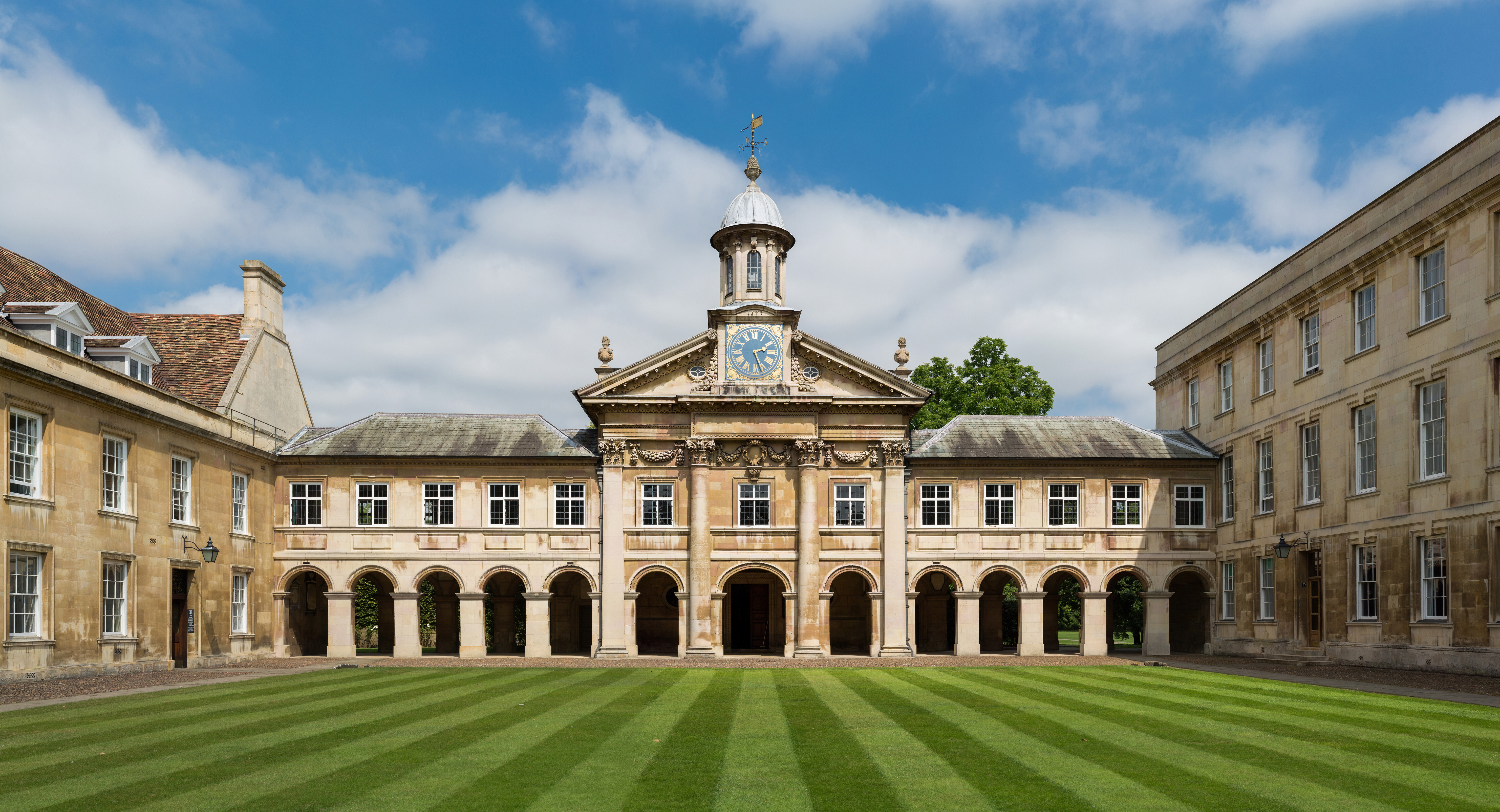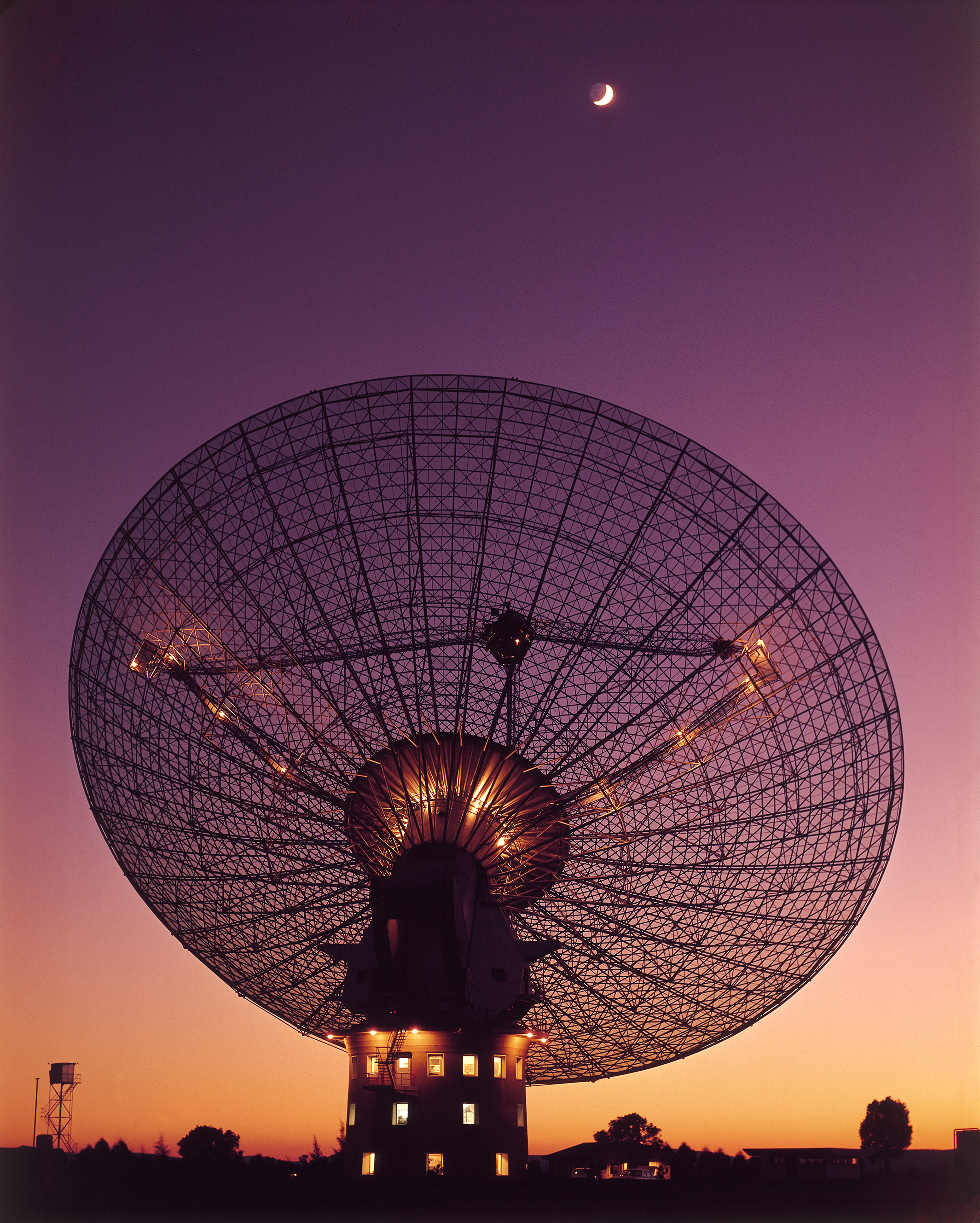|
Half-Mile Telescope
The Half-Mile Telescope was constructed in 1968 (2 aerials) at the Mullard Radio Astronomy Observatory with two more aerials being added in 1972, using donated dishes (total cost was £70,000). Two of the dishes are fixed, while two are moveable and share the One-Mile's rail track; to obtain information from the maximum number of different baselines, 30 days of observing were required. Observing frequency 1.4 GHz (21 cm wavelength), bandwidth 4 MHz. Used for Hydrogen Line studies of nearby galaxies and produced the first good radio maps of hydrogen distribution (as a function of its velocity), for M33 and M31 (also produced nearly 20 PhDs and 50 published papers). The telescope was operated by the Radio Astronomy Group of the Cambridge University , mottoeng = Literal: From here, light and sacred draughts. Non literal: From this place, we gain enlightenment and precious knowledge. , established = , other_name = The Ch ... [...More Info...] [...Related Items...] OR: [Wikipedia] [Google] [Baidu] |
Mullard Radio Astronomy Observatory
The Mullard Radio Astronomy Observatory (MRAO) is located near Cambridge, UK and is home to a number of the largest and most advanced aperture synthesis radio telescopes in the world, including the One-Mile Telescope, 5-km Ryle Telescope, and the Arcminute Microkelvin Imager. It was founded by the University of Cambridge and is part of the Cambridge University, Cavendish Laboratories, Astrophysics Department. History Radio interferometry started in the mid-1940s on the outskirts of Cambridge, but with funding from the Science Research Council and a corporate donation of £100,000 from Mullard Limited, a leading commercial manufacturer of thermionic valves. Construction of the Mullard Radio Astronomy Observatory commenced at Lords Bridge Air Ammunition Park, a few kilometres to the west of Cambridge. The observatory was founded under Martin Ryle of the Radio-Astronomy Group of the Cavendish Laboratory, University of Cambridge and was opened by Sir Edward Victor Appleton ... [...More Info...] [...Related Items...] OR: [Wikipedia] [Google] [Baidu] |
One-Mile Telescope
The One-Mile Telescope at the Mullard Radio Astronomy Observatory (MRAO), Cambridge, UK is an array of radio telescopes (two fixed and one moveable, fully steerable 60-ft-diameter parabolic reflectors operating simultaneously at 1407 MHz and 408 MHz)The operation of the Cambridge one-mile telescope , Vol. 134, p.87 designed to perform |
Triangulum Galaxy
The Triangulum Galaxy is a spiral galaxy 2.73 million light-years (ly) from Earth in the constellation Triangulum. It is catalogued as Messier 33 or NGC (''New General Catalogue)'' 598. With the D25 isophotal diameter of , the Triangulum Galaxy is the third-largest member of the Local Group of galaxies, behind the Andromeda Galaxy and the Milky Way. The galaxy is the smallest spiral galaxy in the Local Group (although the smaller Large and Small Magellanic Clouds may have been spirals before their encounters with the Milky Way), and is believed to be a satellite of the Andromeda Galaxy or on its rebound into the latter due to their interactions, velocities, and proximity to one another in the night sky. It also has an H II nucleus. Etymology The galaxy gets its name from the constellation Triangulum, where it can be spotted. It is sometimes informally referred to as the " Pinwheel Galaxy" by some astronomy references, in some computerized telescope software, and in some pu ... [...More Info...] [...Related Items...] OR: [Wikipedia] [Google] [Baidu] |
Messier 31
Messier may refer to: People with the surname *Charles Messier, French astronomer *Éric Messier, former NHL defenseman *George Messier, French inventor *Jean-Marie Messier, former CEO of Vivendi Universal *Marc Messier, Canadian actor from Quebec *Mark Messier, former NHL player, Hall of fame class 2007 *Paul Arthur Messier, art conservator Other uses *Messier object, a set of 110 astronomical objects *Messier (crater) *Messier (automobile) Messier was a French automobile manufacturer, based at Montrouge, on the southern edge of Paris, from 1925 till 1931.Linz, Schrader: ''Die Internationale Automobil-Enzyklopädie.''Georgano: ''The Beaulieu Encyclopedia of the Automobile.''Georg ..., a French car produced 1925–1931 * Messier-Dowty and preceding companies in manufacture of aircraft undercarriage {{disambiguation, surname French-language surnames ... [...More Info...] [...Related Items...] OR: [Wikipedia] [Google] [Baidu] |
Cavendish Astrophysics Group
The Cavendish Astrophysics Group (formerly the Radio Astronomy Group) is based at the Cavendish Laboratory at the University of Cambridge. The group operates all of the telescopes at the Mullard Radio Astronomy Observatory except for the 32m MERLIN telescope, which is operated by Jodrell Bank. The group is the second largest of three astronomy departments in the University of Cambridge. Instruments under development by the group * The Atacama Large Millimeter Array (ALMA) - several modules of this international project * The Magdalena Ridge Observatory Interferometer (MRO Interferometer) * The SKA Instruments in service * The Arcminute Microkelvin Imager (AMI) * A Heterodyne Array Receiver for B-band (HARP-B) at the James Clerk Maxwell Telescope * The Planck Surveyor Previous instruments * The CLOVER telescope * The Very Small Array * The 5 km Ryle Telescope * The Cambridge Optical Aperture Synthesis Telescope (COAST) * The Cosmic Anisotropy Telescope * The C ... [...More Info...] [...Related Items...] OR: [Wikipedia] [Google] [Baidu] |
University Of Cambridge
, mottoeng = Literal: From here, light and sacred draughts. Non literal: From this place, we gain enlightenment and precious knowledge. , established = , other_name = The Chancellor, Masters and Scholars of the University of Cambridge , type = Public research university , endowment = £7.121 billion (including colleges) , budget = £2.308 billion (excluding colleges) , chancellor = The Lord Sainsbury of Turville , vice_chancellor = Anthony Freeling , students = 24,450 (2020) , undergrad = 12,850 (2020) , postgrad = 11,600 (2020) , city = Cambridge , country = England , campus_type = , sporting_affiliations = The Sporting Blue , colours = Cambridge Blue , website = , logo = University of Cambridge log ... [...More Info...] [...Related Items...] OR: [Wikipedia] [Google] [Baidu] |
Cavendish Laboratory
The Cavendish Laboratory is the Department of Physics at the University of Cambridge, and is part of the School of Physical Sciences. The laboratory was opened in 1874 on the New Museums Site as a laboratory for experimental physics and is named after the British chemist and physicist Henry Cavendish. The laboratory has had a huge influence on research in the disciplines of physics and biology. The laboratory moved to its present site in West Cambridge in 1974. , 30 Cavendish researchers have won Nobel Prizes. Notable discoveries to have occurred at the Cavendish Laboratory include the discovery of the electron, neutron, and structure of DNA. Founding The Cavendish Laboratory was initially located on the New Museums Site, Free School Lane, in the centre of Cambridge. It is named after British chemist and physicist Henry Cavendish for contributions to science and his relative William Cavendish, 7th Duke of Devonshire, who served as chancellor of the university and donat ... [...More Info...] [...Related Items...] OR: [Wikipedia] [Google] [Baidu] |
Radio Telescopes
A radio telescope is a specialized antenna and radio receiver used to detect radio waves from astronomical radio sources in the sky. Radio telescopes are the main observing instrument used in radio astronomy, which studies the radio frequency portion of the electromagnetic spectrum emitted by astronomical objects, just as optical telescopes are the main observing instrument used in traditional optical astronomy which studies the light wave portion of the spectrum coming from astronomical objects. Unlike optical telescopes, radio telescopes can be used in the daytime as well as at night. Since astronomical radio sources such as planets, stars, nebulas and galaxies are very far away, the radio waves coming from them are extremely weak, so radio telescopes require very large antennas to collect enough radio energy to study them, and extremely sensitive receiving equipment. Radio telescopes are typically large parabolic ("dish") antennas similar to those employed in tracking a ... [...More Info...] [...Related Items...] OR: [Wikipedia] [Google] [Baidu] |





